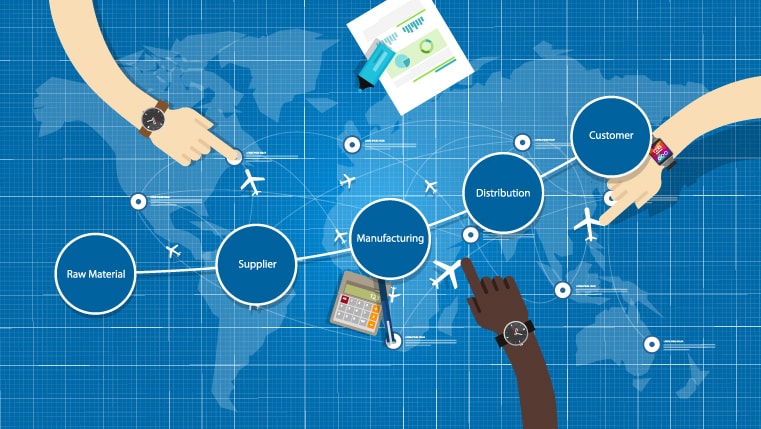Optimize Your Supply Chain Process Training with E-Learning

Supply Chain refers to the management of the flow of goods and services. It involves the movement and storage of raw materials for your products, Work in Progress inventory, and finished goods, right from the point of origin to the point of consumption. A supply chain process deals with the planning, execution, control, and monitoring of supply chain activities. The ultimate goal is to build a smooth functioning infrastructure, which leverages worldwide logistics and increases profitability by synchronizing supply with demand.
Needless to say, supply chain processes are sophisticated business modules involving a large ecosystem. To make the most of this, it is essential that your employees be trained effectively in every aspect of supply chain processes. However, when these processes are explained through traditional classroom methods using mere presentations, employees tend to find them boring and less stimulating. Also, since supply chain processes span a global landscape, keeping training consistent with a traditional learning method is just not feasible. That’s why you can adapt an e-learning program to ensure your employees are proficiently trained in this crucial aspect of your business. Let’s see some e-learning methodologies that will help optimize and enhance your supply chain processes training:
Scenario-based Learning
Supply chain processes deal with a lot of real life situations. Right from the production capacity of your manufacturing unit, to the changing trends of market demands, each aspect is governed largely by people. In such a setup, if your supply chain training uses plain flowcharts and diagrams, your employees are sure to lose interest quickly. To overcome this, e-learning courses makes use of story-based learning. It constructs relatable scenarios around a character, and takes employees through your process, like a story. Employees instantly visualize themselves in practical situations and form connections with the subject matter.
Game-based & Gamification Content
Employees often remain aloof while taking supply chain training, as they are mere spectators in an ongoing course. E-learning changes this using highly interactive game-based content. This method essentially converts your entire supply process into a game. However, this doesn’t mean it’s all fun and no work. When employees play such games, their mind sub-consciously picks up on things pertaining to your supply process, in a stress-free manner. Additionally, e-learning also uses gaming elements such as scores, leaderboards, and rewards to keep employees invested in the learning process.
Software Simulations
Supply chain processes are lengthy, complicated, and involve many stages. To facilitate things, most organizations use a wide variety of tools and software applications. Using classroom sessions for teaching digital tools can be a painstaking process. E-learning fixes this by using interactive learning methods such as simulations.
Simulations give learners a firsthand experience at operating your supply chain systems, without any associated underlying risks. If employees are subject to a text-heavy session to teach software, their chances of committing mistakes in practical scenarios are very high. Such mistakes can also have serious monetary consequences. Simulations increase the confidence level of your employees when they sit to perform any task and help them avoid incidents.
Videos and Other Multimedia
E-learning courses, instead of using text-heavy modules to convey long procedures, rely on short videos. These crisp learning modules deliver a large amount of content in very little time. E-courses also use infographics, animations, and voiceover to break the monotony of text and include some spark in your learning program. These methods appeal to multiple learning senses of employees, which results in better knowledge transfer.
Superior Performance Support
No matter how good your training program is, the fact remains that there will be certain parts your employees will forget, when the time comes to perform the task. E-learning modules cleverly circumvent this problem using microlearning modules. These are bite-sized learning nuggets that convey a single topic at a time. Leaners can quickly access these right before executing a task and refresh their knowledge. This greatly reduces the errors your employees commit and thus greatly improves job efficiency.
So want to make sure that your supply chain processes are followed up to the mark? Adapting an e-learning program is your best shot at making it happen.





